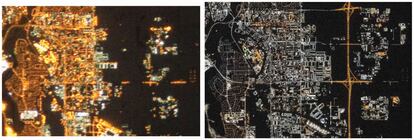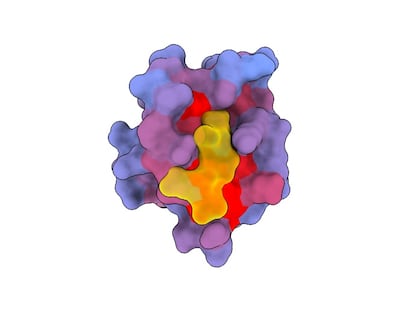This generation will no longer be able to see the stars: Light pollution is growing by 10% a year
Nighttime brightness from human activity continues to increase; now, only the brightest stars can be seen in cities
Sirius, Vega, Arcturus, Betelgeuse and perhaps Capella: According to scientists’ estimates, these will be the only stars that most people in northern hemisphere cities will be able to see by the end of this century. With the help of thousands of people who gaze at the sky every night, researchers measured the nighttime brightness generated by artificial lights: over the last decade, it has increased to the point of darkening the celestial vault.
The problem of light pollution has continued to grow ever since astronomers had to leave the cities to observe the stars last century. But the magnitude has increased exponentially in this century. A 2016 paper estimated that 83% of the world’s population has polluted night skies. The following year, another investigation led by Christopher Kyba, a researcher at Germany’s Geoscience Research Center in Potsdam, confirmed that nights on Earth were getting brighter, and that the glow generated by artificial lights was growing at a rate of 2.2% a year. But things have turned out to be much worse than that.
In fact, according to research published in Science, the Earth’s artificial brightness at night has been increasing by 9.6% each year for at least a decade. That’s nearly a fivefold increase over the figures obtained so far. To put it in perspective, Kyba, the lead author of this new paper, says that “at this rate of change, a child born in an area where 250 stars are visible, will only be able to see 100 by the time he or she is 18.” Moreover, “perhaps only five of the brightest stars would still be visible” when that person turns 80, Kyba notes.
There is a major difference between the 2.2% increase in the 2017 study and the 9.6% in this year’s article. Neither of the figures is wrong, but they were obtained through very different methods. Thus far, almost all global-scale light pollution research has relied on satellite data. There are some instruments for measuring the artificial light emitted from Earth, such as NASA’s Suomi National Polar-orbiting Partners (NPP) and the National Oceanic and Atmospheric Administration (NOAA) weather agency. One might think that these devices well capture the night brightness from above, but that is not the case.
Radiometers and satellite cameras do not effectively register horizontal light pollution, that is, the light emitted by façades, shop windows and billboards that also obscure our view of the sky. More importantly, Alejandro Sánchez de Miguel, a researcher at the School of Physical Sciences at Spain’s Complutense University, explains that “these satellites are focused on the infrared and the red and green parts of the spectrum. They are simply blind to the blue. And it is precisely blue LEDs that cause nighttime light pollution as LED technology replaces amber or yellow sodium lamps.” Blue light is also “the light that scatters best across the sky and to which the human eye is most sensitive at night,” adds Sánchez de Miguel, who was not involved in Kyba’s current research.

A second major contribution of the new research in Science is that it incorporated the human element after scientists detected the rapid increase in nighttime brightness. This study’s calculations are not based on what the satellites saw from above but rather what humans saw from below. The results of Kyba’s work are based on over 51,000 observations made by people around the world who installed an app from the Globe at Night project, which is sponsored by the US National Science Foundation (NSF). Participants had to look at the sky and select the star map that best matched what they saw out of the seven choices. Thousands of records were collected over 12 years.
“Individual observations are not very accurate, but the method’s power comes from the combination of thousands of them, because the average of all those imprecise observations is actually very stable,” Kyba says. This approach’s other advantage is that it relies on human perception. “Imagine that I find through instrumental observation that the red component of the sky’s brightness has decreased by 70%, but the blue component has increased by 30% [the effects of the LED transition]. Did the situation get better or worse? It’s very difficult to be sure with instruments. Using human observations, we know immediately what it means for humans,” Kyba adds.
The work does have a weakness, which also stems from the human factor: the vast majority of the observations come from North America, Europe and East Asia (Japan and South Korea). In other words, the investigation’s conclusions are only valid for these areas. For the rest of the planet, we must continue to rely on what the satellites are recording.
Fabio Falchi, a researcher at Italy’s Istituto di Scienza e Tecnologia dell’Inquinamento Luminoso (Light Pollution Science and Technology Institute), says that “the human eye is not better; it simply considers the exact passband of its sensitivity to communicate the perceived brightness to the brain.” The passband refers to the range of frequencies that can pass through a filter, the human eye in this case. “If we want to study the effect of light pollution in obscuring the visibility of stars, the eye is a good sensor, and satellites do not have this passband,” he points out.
Falchi, who recently wrote a paper on the impact of night brightness on the world’s telescopes, also published a commentary on Kyba’s work in Science, which he co-authored with Salvador Bará, his colleague at the Department of Applied Physics at the University of Santiago de Compostela (Spain). In it, they note: “Looking at the International Space Station’s images and videos of Earth’s night hemisphere, people generally are only struck by the ‘beauty’ of the city lights, as if they were lights on a Christmas tree. They do not perceive that these are images of pollution.” They explain that “it is like admiring the beauty of the rainbow colors that gasoline produces in water and not recognizing that it is chemical pollution.”
Sign up for our weekly newsletter to get more English-language news coverage from EL PAÍS USA Edition
Tu suscripción se está usando en otro dispositivo
¿Quieres añadir otro usuario a tu suscripción?
Si continúas leyendo en este dispositivo, no se podrá leer en el otro.
FlechaTu suscripción se está usando en otro dispositivo y solo puedes acceder a EL PAÍS desde un dispositivo a la vez.
Si quieres compartir tu cuenta, cambia tu suscripción a la modalidad Premium, así podrás añadir otro usuario. Cada uno accederá con su propia cuenta de email, lo que os permitirá personalizar vuestra experiencia en EL PAÍS.
¿Tienes una suscripción de empresa? Accede aquí para contratar más cuentas.
En el caso de no saber quién está usando tu cuenta, te recomendamos cambiar tu contraseña aquí.
Si decides continuar compartiendo tu cuenta, este mensaje se mostrará en tu dispositivo y en el de la otra persona que está usando tu cuenta de forma indefinida, afectando a tu experiencia de lectura. Puedes consultar aquí los términos y condiciones de la suscripción digital.
More information
Últimas noticias
The complicated life of Francesca Albanese: A rising figure in Italy but barred from every bank by Trump’s sanctions
Pinochet’s victims grapple with José Antonio Kast’s rise in Chile
Reinhard Genzel, Nobel laureate in physics: ‘One-minute videos will never give you the truth’
How Japan is trying to avert ‘digital defeat’
Most viewed
- Pablo Escobar’s hippos: A serious environmental problem, 40 years on
- Reinhard Genzel, Nobel laureate in physics: ‘One-minute videos will never give you the truth’
- Why we lost the habit of sleeping in two segments and how that changed our sense of time
- Charles Dubouloz, mountaineering star, retires at 36 with a farewell tour inspired by Walter Bonatti
- The Florida Keys tourist paradise is besieged by immigration agents: ‘We’ve never seen anything like this’











































